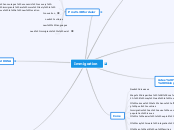af Vidar Steffensen Steffensen 7 år siden
320
Immigration

af Vidar Steffensen Steffensen 7 år siden
320

Mere som dette
https://venngage.com/blog/why-immigration-is-good/
Immigrants in Norway per 2018 - 916 625, 17,3%
https://no.wikipedia.org/wiki/Innvandrere_i_Norge
3 types of immigrants:
1) Skilled workers that our country demands and has recruited from other countries
2) Work immigrants - people who have come to seek work of their own choice
3) Refugees and asylum seekers
After the discovery of gold in California in 1849, people from
all over the world came to take part in the Gold Rush. Many Chinese
also moved to the west coast at this time.
Irish immigrants
From 1641 to 1652, over 300,000 Irish people were sold as virtual slaves as a form of punishment to the first 13 colonies lasting from 7 to 20 years. The next major wave of Irish immigration was due to the devastation of the Irish Potato Famine (1845-1849). During the period of the Irish Potato Famine the population of Ireland dropped from 8 million to 6 million due to death from starvation or immigration.

The discovery of America led to a great power struggle for control of the new lands primarily between the three most powerful countries in Western Europe at the time: Spain, England, France. These European countries financed the voyages of the early explorers for many reasons:
To increase their lands and build great European Empires and to increase the wealth of the 'Mother Country' by exploiting the natural resources of the new lands - the search began for gold, silver and spices. To increase opportunities for trade and to spread the Christian religion.
The first explorers were followed by settlers - the immigration to America by the Europeans began in earnest. Most early immigrants were from England, but they also came from Scotland, Wales, Ireland, Germany, Holland and France by the 1600s
Native Americans, also known as American Indians, Indigenous Americans and other terms, are the indigenous peoples of the United States, except Hawaii. There are over 500 federally recognized tribes within the US, about half of which are associated with Indian reservations.
Most famous:

https://www.economist.com/graphic-detail/2017/07/12/why-europe-needs-more-migrants
After WWII, Australia launched a massive immigration program. Australia must "populate or perish".
,
 The Anglo-Saxons were a people who inhabited Great Britain from the 5th century. the Anglo-Saxon period denotes the period in Britain between about 450 and 1066, after their initial settlement and up until the Norman conquest.
The Anglo-Saxons were a people who inhabited Great Britain from the 5th century. the Anglo-Saxon period denotes the period in Britain between about 450 and 1066, after their initial settlement and up until the Norman conquest.
The Normans are an ethnic group that arose in Normandy, a northern region of France
The Norman dynasty had a major political, cultural and military impact on medieval Europe and the Near East